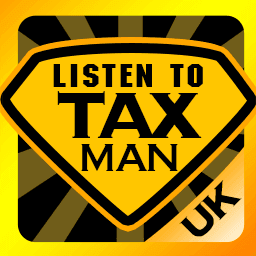Understanding the SEISS Extension
*Please note the information in this article may be out of date
If you’re self-employed, the latest U-turn in government policy could well benefit you. Instead of ending on the 1st October 2020, the Self-Employment Income Support Scheme (SEISS) is extending to April 2021.
Mon, 23 Nov 2020The 3rd grant opens for applications on 30th November 2020.
This extension is taking the form of two grants: one covering the period between November 2020 to January 2021, and the other from February 2021 to April 2021. By extending the support, the government is acknowledging the contribution that sole traders make to the UK economy and how important it is to keep them afloat.
So, to help you get the most out of SEISS and ensure the success of your business, we’ve asked Mike Parkes from GoSimpleTax to explain the extension and how you can claim it.
What is the SEISS?
The SEISS is a series of taxable government grants for self-employed individuals. It was set up to support self-employed workers whose earnings have been adversely affected by COVID-19.
The scheme opened to applications of its first grant on the 13th May 2020. Successful applicants could get either £7,500 or 80% of their average monthly profits over the 2016/17, 2017/18 and 2018/19 tax years (whichever was the lower amount). The second phase involved a grant worth 70% of average monthly trading profits. It was paid out in a single instalment covering three months’ worth of profits, and capped at £6,750.
What’s the value of the latest grant?
The third one (1st November 2020 to 31st January 2021) offers 80% of three months’ average monthly profits up to a total of £7,500. This is the same value as the first grant.
How do I know if I’m eligible?
The majority of the terms to the latest grant are the same as the first two. However, there’s one new requirement regarding reduced demand.
To make your application easier, I’ve listed each one below:
- You must declare that you’ve been impacted by reduced demand due to COVID-19 – This is the new term and it means that you can make a claim on the basis that you were previously trading but are temporarily unable to do so due to coronavirus.
- You must have filed a tax return for 2018/19 –In other words, you need to have been self-employed prior to 6th April 2019.
- You were eligible for the first and second SEISS grants – Although you do not have to have made a previous claim for these earlier grants.
- You must earn more than 50% of your total income from self-employment –HMRC will check this on your 2018/19 tax return. If you’re not eligible based on the 2018/19 tax year alone, they’ll review tax years 2016/17, 2017/18 and 2018/19 to see if your average profit across three years was more than 50% of your total income.
- You must be actively trading – You need to declare this to HMRC when you apply, and must intend to continue trading post-pandemic.
- Your average trading profit must be less than £50,000 – Any applicants earning more won’t be eligible.
Remember, you are still able to apply even if you didn’t apply for the previous two grants. Likewise, you can keep working after claiming the grant. You just need to prove that you were impacted by reduced demand during the pandemic.
How do I claim?
It’s simple, all you need to do is visit the official government claims portal. Applications for the third grant open on the 30th November, but you can create a Government Gateway account in the meantime. This will streamline the process when applications open.
This grant is arguably the best opportunity for sole traders to keep their businesses going through the uncertain times ahead. It’s unclear if the fourth grant will be as generous, especially if lockdown has eased by the time applications open.
Bear in mind that the 31st January is your tax return deadline too, so it’s important to have all your finances in order or you might risk losing your eligibility in future months. Software like GoSimpleTax can help you with this by enabling you to update your tax return in real time.
Please also note that these grants are subject to tax and national insurance and need to be included as part of your self-employed income on your 2020/21 tax return.
This article was written by our Self-Assessment Expert, Mike Parkes, who is also a director at GoSimpleTax, a low-cost online-software package which makes it really easy for the Self-Employed to calculate and submit their annual Tax Self-Assessment. They offer freemium access – and best of all NO payment details are required, which makes it very easy to try out.

 Our Favourite Tax App?
Our Favourite Tax App?
It's Simple
ListenToTaxman have teamed up with GoSimpleTax, the online self-assessment app to bring you, what is in our view, the easiest way of calculating and submitting your tax return we’ve seen so far. Key in your income and expenses into the app, and it will flag up any unclaimed allowances. Simple.
Once you’re comfortable with the information you’ve entered, simply submit via the app to HMRC. You’ll just need your Tax Reference Number - found on most tax correspondence. GoSimpleTax let you use their software free for 14 days. If you don’t think it’s right for you - don’t pay anything. If you do to choose to submit your tax information via the app, then at most of you will be charged £46 for their standard service (silver).
